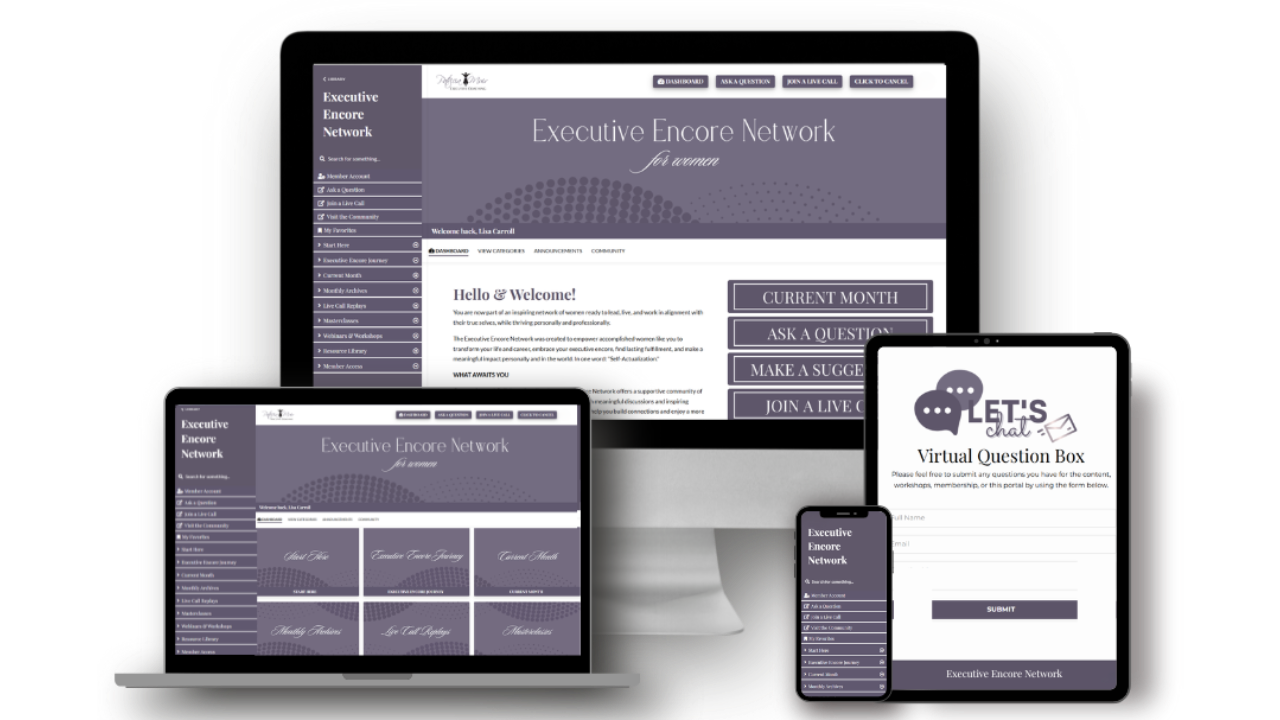
THRIVE: Life-changing events are just that: life-changing.
Nov 18, 2020Reintegrating back into work isn’t easy after a long-term absence or critical illness, for anyone – the returning employee, their co-workers, or the manager.
Life goes on, or so they say, while the person is away. Work carries on, challenges are met, goals change, and the team sort of ‘re-forms’, either figuring out how to ‘get it done’ in spite of a void if the position is left open, or learning to work with a temporary replacement who does their best to fill in.
Either way, it’s a major fork in the road. The absent employee and the rest of their ‘work universe’ are suddenly sent down separate evolutionary paths for which they are often unprepared.
Nothing remains the same in any workplace
Imagine if you will, being out of the business for say, six months. Old teammates may no longer be there and new ones may have been hired who have no connection to you, the absent employee. Policies may have changed, customers will have come and gone, new technology may have been implemented... I’m not sure it wouldn’t be easier for a new hire who didn’t have to erase ‘old’ knowledge.
Hard as it is to absorb everything that’s changed in the business over the six months, that’s the visible part of the iceberg. There’s often a whole lot more, unseen below the surface.
Major events are life-changing
When any of us encounters and navigates through a major life event, we are changed.
Becoming a parent, for example, is so much more than learning the mechanics of diaper changes and midnight feedings – we experience the full range of emotions from joy to exhaustion and in the process of forming a relationship with the new life entrusted to us, we are ourselves transformed. Our identity and our self-image change.
Battling cancer or recovering from a stroke, for example, is no different. In the struggle, we find strengths we have never had to draw upon, form perspectives and viewpoints we didn’t have previously, and view life and the world around us with a different set of eyes.
We are, quite literally, different people than we were at the beginning.
‘Hard-wiring’ vs. ‘plasticity’
The conventional wisdom is that ‘who we are’ – our deep personality traits, core attitudes, standards, and beliefs – is pretty much ‘hardwired’ once we are through our early 20s. We are pretty much who we are going to be for the rest of our lives. Anyone who’s been to a 30-year high school reunion can attest to that.
And yet, new research would suggest that the brain is actually much more ‘plastic’, or flexible, than once thought... but there needs to be a secret ingredient for change to happen at that level: the stress of a life event.
Case Study: Jane's experience
Please note the names of individuals have been changed to protect privacy and confidentiality.
A number of years ago, we had the unique opportunity to study the core behavioral traits of someone before her cancer diagnosis and again three years later after she had fought a tough battle with cancer and (for the time being at least) won.
Jane was driven, a successful sales manager in her forties in whom we would normally expect to see very few changes over that three year period. And yet, here are the biggest changes we uncovered in her ‘core’ personality – who she is deep down inside and how she sees the world:

- Verbal Skill and Reasoning – how she uses words in thinking and problem solving – marked an increase in scores, as she became much more intentional and ‘present’ in her conversations, treating them with a higher level of care and importance.
- Manageability – tendency to ‘follow the rules’ and accept structure at work – marked decrease in scores; she ascribed less importance to rules and structure. She didn’t flout them, but an attitude of ‘life’s short’, pick your battles’ put them in a different perspective – and luckily for her, she was in a role where that wasn’t a problem.
- Attitude – tendency to have a positive attitude about outcomes – decreased. She initially scored in the top 2% of the population for positivity and trusting in happy endings. Jane’s experience with cancer balanced that worldview causing her to be more cautious with giving support and approval to others.
- Decisiveness – relying on the available information to make quick decisions – increased as if there was a newfound urgency to moving ahead and to getting things done. At the same time, she became more comfortable changing direction in her plans/actions as she gathered more information.
- Independence – self-reliance and a willingness to take independent action – increased partly because Jane thought of the lessons learned in taking control of her treatment plan and healing. She did not blindly accept the advice of her oncologist, she built a plan that worked for her.
- Accommodating – the tendency to ‘go with the flow’, to surrender your point of view for the sake of team harmony. Jane saw a huge shift here, from scoring in the top 6% of the population (very accommodating) to scoring in the bottom 6% of the population. The experience had taught her – or rather, the way she internalized and responded to the experience – that she had to take care of herself first. Providing comfort to others became less of a priority.
- Objective Judgment – the tendency to rely on logic and facts (vs. feelings and instinct) in decision-making. This was an equally dramatic shift for Jane from scoring in the 16% most driven by logic to finding herself among the 2% of the population most guided by feelings and intuition.
There’s no denying, the fight had changed Jane in significant ways. She was quite simply NOT the same person when she returned to work.
Implications for all concerned
Of course, the implications to any returning employee and those in the workplace when their paths rejoin after a long absence are considerable. In every respect, it would be unwise to assume that things will go back to the way they were. There needs to be a gradual ’getting to know you again’ process that allows all concerned to reconnect - on their own terms.
And of course, having a map that charts the hidden part of the iceberg is never a bad thing.
Mapping the iceberg below what’s visible
The conversation came full circle when I interviewed Linda, Jane’s manager – and who has since been through a significant life change with the premature illness and passing of her husband:
"Putting myself in the shoes of a manager - someone comes back and are responding/interacting/behaving differently from the way they ‘used to’. How do you open up that conversation without feeling like you’re crossing a boundary, or potentially saying something that could offend or unsettle that person? I’m thinking of a situation at work where someone came back from LTD from a mental health leave - I don’t know if that person’s assessment scores would have changed, but it could have been a useful bridge to opening up the ‘how can we work best together, now?’ conversation.
I recall when we walked through my own ‘post-recovery’ assessment scores and we looked deeper in those areas where there had been a significant shift. It really helped me to appreciate how those shifts could be unsettling or unexpected for certain people in my life. It helped me put some words around it that helped people understand and appreciate why, for example, I was showing up more ‘independent’." - Linda
Patience, understanding, and compassion are all critical elements of a successful re-integration. Objective information about who the person is, deep down inside, can provide a very useful roadmap that can open up and guide the conversation and rebuild positive, productive relationships.
Fit First Technologies can help
We would like to hear your thoughts on this topic. Are you the person returning to work? Are you the manager or supervisor of someone returning to work? Are you an employee who works with someone who is returning to work?
What tools does your organization utilize to assess skills and behaviours for hiring that can also be effective in assessing the impact of changes after an employee’s life-changing event? What assessments do you utilize in the return-to-work process in order to develop an effective accommodation plan?
Fit First Technologies can help you to be proactive with hiring and be effective in assessing and responding to the impact of life-changing events – when the time comes.
60% of individuals with cancer are in the most productive years of their careers
Maestro Quality Inc. can work in alliance with Fit First Technologies and your organization to develop a return-to-work accommodation plan based on the ‘before’ and ‘after’ assessments and focused on the best outcome for the employee, the workplace, and the organization.
Contact Jan at [email protected] or phone 905-338-7961. Visit Fit First Technologies website at http://www.talentsorter.com. Follow and connect with Jan on Social Media. Twitter. Linkedin.
Next Steps
You don’t need to navigate your Executive Encore alone. Discover a better way to take charge of your experience.
- Schedule a 30-Minute Complimentary Executive Encore Call.
Ready to elevate your encore chapter?
- Join the Executive Encore Network for Women, a membership and community of supportive women ready to inspire and uplift. Subscribe to the Sunday Encore to begin your Executive Encore Journey and register for the next Tour to learn more.


